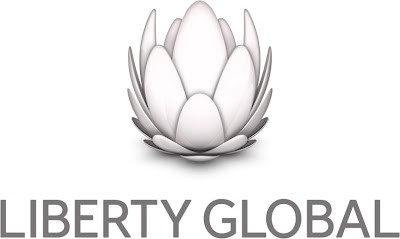
The Man from A.L.E.C. represents premiere members Time Warner Cable and AT&T.
The News & Observer has printed a rebuttal to a guest editorial from Christopher Mitchell and Todd O’Boyle accusing the two of misleading readers about the true state of North Carolina’s broadband.
The author, John Stephenson, is director of the Communications and Technology Task Force at the American Legislative Exchange Council (ALEC). Considering North Carolina’s largest broadband providers — AT&T and Time Warner Cable — are both card-carrying members of ALEC, his response mouths their words.
Nearly 300 million Americans have access to at least one and, in most cases, two or three broadband providers. Moreover, wireless and satellite providers continue to invest in 4G wireless technology and new satellites that can now offer speeds rivaling wired broadband.
By contrast, government-owned broadband has demonstrated mixed results at best and abject failure at worst. Cities’ attempts to build and operate their own broadband networks have been marked by poor results, huge debts and accounting gimmicks that threaten taxpayers.
In North Carolina, broadband “consultants” persuaded cities like Salisbury and Mooresville to ignore basic economics and to compete against private providers. But the broadband networks recorded deficits and were forced to tap other sources of financing. Despite these losses, as many as three dozen North Carolina cities appeared ready to go down the same dangerous path.
Stephenson’s rebuttal regurgitates the usual Time Warner Cable and AT&T talking points — the same ones used to convince North Carolina legislators to ban community broadband (with contributions to their campaign coffers stapled to the back).
Fact: North Carolinians typically have at most two choices for broadband, the telephone and cable company. Only a few cities were lucky enough to construct community-owned alternatives before the hammer fell in the General Assembly. Stephenson’s alternatives include satellite broadband, which delivers slow speeds and a paltry usage allowance or wireless 4G broadband that will set you back a fortune. North Carolina’s largest providers AT&T and Verizon Wireless sell service with a starting monthly cap of 1GB. Anything more costs more. These are hardly comparable choices to wired broadband.
Fact: Community broadband in cities like Wilson and Salisbury dramatically outperform Time Warner Cable and AT&T and deliver a fair deal instead of temporary promotions and endless rate hikes from the cable/telco bully boys. Stephenson uses the case of Mooresville to trash community broadband, which is a weak example. That city bought a decrepit cable system from bankrupt Adelphia Cable and had to spend a fortune to rebuild it. It’s now on track to deliver for local residents. Those communities would have been better off with a fiber to the home system, but the rebuilt cable system still delivers more competition than Time Warner and AT&T ever gave one-another.
Stephenson also ignores the debts the cable and phone companies piled up when they first built their networks. It is the cost of getting into the telecommunications business. Cable companies needed 10, 20, or even 30 years to pay off construction costs. Community providers got into telecommunications with the knowledge it would take time to pay back the initial debt, but they hope to do it without gouging customers.
ALEC routinely pits community providers against private ones as “government funded unfair broadband competition.” But the group ignores the fact cities like Charlotte have doled out tax incentives and other goodies to Time Warner Cable for building its new headquarters there. AT&T is not doing too bad either, securing statewide video franchising and effective permission to drop its ugly U-verse cabinets on public easements all over the state.
The fact is, the only disruptive force in North Carolina’s broadband market comes from community-owned providers trying to break up the comfortable telco-cable duopoly that charges nearly the same prices for the same yesteryear service. That’s a story The Man from A.L.E.C. cannot afford to tell you.


 Subscribe
Subscribe
 Under Malone’s leadership, TCI Cable raised rates 60 percent in 1992 alone, helping drive the enactment of the 1992 Cable Act which began to slow the pace of rate hikes. The bill was vetoed by then President George H.W. Bush but overridden in Congress after tens of thousands of constituent complaints poured into Washington. It was sweet justice for many elected officials who were on the receiving end of Malone’s hardball tactics for nearly 20 years. Malone was well known for retaliating against local officials who opposed his unfettered rate increases by suddenly cutting off service to customers and putting up on-screen messages in the place of favorite channels with the names and phone numbers of elected officials Malone claimed were responsible.
Under Malone’s leadership, TCI Cable raised rates 60 percent in 1992 alone, helping drive the enactment of the 1992 Cable Act which began to slow the pace of rate hikes. The bill was vetoed by then President George H.W. Bush but overridden in Congress after tens of thousands of constituent complaints poured into Washington. It was sweet justice for many elected officials who were on the receiving end of Malone’s hardball tactics for nearly 20 years. Malone was well known for retaliating against local officials who opposed his unfettered rate increases by suddenly cutting off service to customers and putting up on-screen messages in the place of favorite channels with the names and phone numbers of elected officials Malone claimed were responsible.
 The Vermont Telecommunications Authority (VTA) has announced $1 million in grant funding to defray the costs of providing broadband service to currently unserved homes and businesses around the state.
The Vermont Telecommunications Authority (VTA) has announced $1 million in grant funding to defray the costs of providing broadband service to currently unserved homes and businesses around the state. The Kentucky Resources Council is appealing to Kentucky residents and elected officials to stop AT&T’s plan to abandon rural landline service in the state with the passage of a bill now before Kentucky lawmakers
The Kentucky Resources Council is appealing to Kentucky residents and elected officials to stop AT&T’s plan to abandon rural landline service in the state with the passage of a bill now before Kentucky lawmakers 
